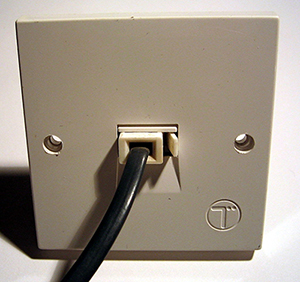Support
NO SYNC
A ‘no sync’ or ‘no synchronisation’ fault is a loss of signal between your router and the equipment in the exchange. If you have lost this signal then your router will not report an upstream or downstream speed on its status page and the status light for this portion of the connection (normally labelled line, sync, DSL, CD or similar) will be dark, blinking steadily or a warning colour such as orange or red.
There are four points where a fault could have developed that could cause this fault. These are the equipment in the exchange (the equivalent of your router), your phone line between the exchange and your property, your internal wiring – extensions, microfilters and cables, and your router or some other device connected to your phone line.
We provide a “wires-only” service. Which is to say that we provide an ADSL (broadband) signal to your master socket but do not support what you do with it after that point. We are able to help with faults in two of these areas, but unfortunately we are not able to assist with all of them.
If the fault has developed within our remit then we will carry out corrective action free of charge in order to repair the service, however this may require that an Openreach Special Faults Investigator – an engineer trained in ADSL faults – is dispatched to investigate and repair the line or exchange equipment.
If this engineer demonstrates that the fault lies beyond our remit, on your internal wiring or equipment, then there may be a callout charge for his time. As such there are a series of standard checks that we recommend you follow so we can eliminate the areas of your responsibility as a potential cause before we progress to an engineer.
1. Ensure that your phone line is working normally and free of noise or interference. An ADSL service requires a working phone line and if there are any problems with the phone service these will need to be raised and resolved first.
2. Try and connect the modem/router to the BT test socket, leaving all other equipment disconnected. At your master socket you should be able to remove the lower two thirds of the faceplate and you will find another telephone socket behind it. With the faceplate removed your extensions are disconnected and only that test socket is active.

4. Test your router on another broadband (ADSL) line to see if it can gain a connection or test another ADSL router on your line to ensure that the router is working correctly.
If none of these tests are able to restore your connection then please contact Technical Support in order to progress your issue.
